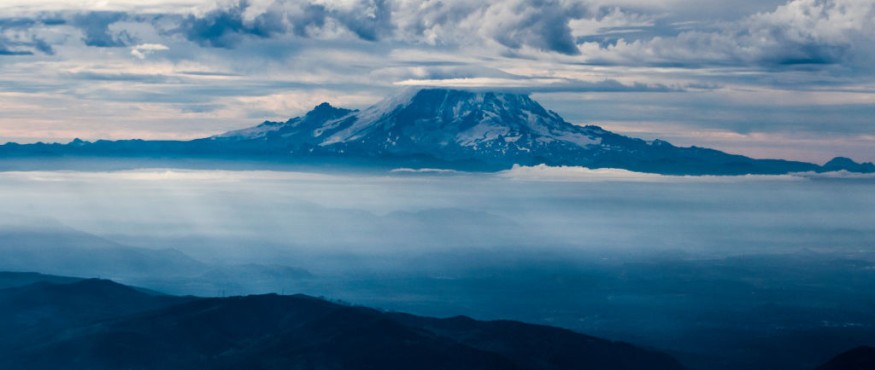The volcanoes in Washington are no strangers to small quakes. One of the most common is the seismic tremors due to glacier movements.
Understanding earthquakes is important for people's safety and communities. Quakes can bring disastrous damage to life and property as it can hit communities without notice.
In the Washington Cascades and the mountains in the Pacific Northwest, the area has been known for challenging to extreme temperatures. In the arrival of fall weather and winter, the temperatures can likely become harsher and form more ice or snow.
The volcanoes in Washington, it is no stranger to quakes. Seismic tremors were also detected in the region due to the glacial movements. Glaciers are known as a factor in seismic activity in ice areas.
Small Glacial Seismic Tremors

According to USGS, the agency has been monitoring Mount Rainier since 1985. Rainier is active in seismic activities. Unlike usual volcanic quakes, glacier or ice earthquakes can't be detected by distant stations. As a result, it can also be recorded by people in the nearby stations.
When ice quakes can occur, it can result in ice falls or avalanches. It can bring significant risks to nearby communities when quakes become stronger or intensify.
Experts near the said areas have managed to develop effective monitoring and tracking methods to anticipate any seismic activities. Based on the report, seismologist Seth Moran explained that glaciers could move in warmer months.
Moran is also from the USGS Cascades Volcano Observatory.
Furthermore, Alaska has experienced hundreds of seismic activities every year due to glaciers. The University of Alaska Fairbanks report showed that about 1,500 to 2,000 glacial quakes were observed there, monitoring parts of Yakutat Bay, Prince William Sound region and Icy Bay.
Ice or glacial quakes can also emerge during April or October, in addition to the warmer months. In Greenland, the region has suffered from small glacial seismic events. However, it managed to increase between 2000 and 2005.
In Antarctica, there is a growing need to study the ice quakes in the region. As a result, additional studies about glacial earthquakes are essential to offer new insights.
Also Read : Powerful 1923 Kanto Earthquake Killed 90% of the 105,000 Affected People in Tokyo, Study Shows
Keeping Safe From Challenging Earthquakes and Glacial Seismic Events
Earthquakes can bring significant risks to communities. Preparedness is crucial when quakes or tremors hit. Here are essential reminders to remain safe from earthquakes.
- Homeowners should prepare emergency plans at home. At home, it is best to secure all fragile and hazardous equipment that can likely fall.
- An emergency disaster kit is also recommended during quakes or other extreme weather events. Homeowners should keep medicine kits, flashlights, a small radio, bottled water and extra mobile phones.
- When you plan to go to mountainous areas, hikers and campers should check for the latest announcements and travel dangers.
Related Article : US At Risk of Earthquake: 6 Quake Preparedness Tips to Avoid Dangers
For more similar stories, don't forget to follow Nature World News.
© 2025 NatureWorldNews.com All rights reserved. Do not reproduce without permission.





